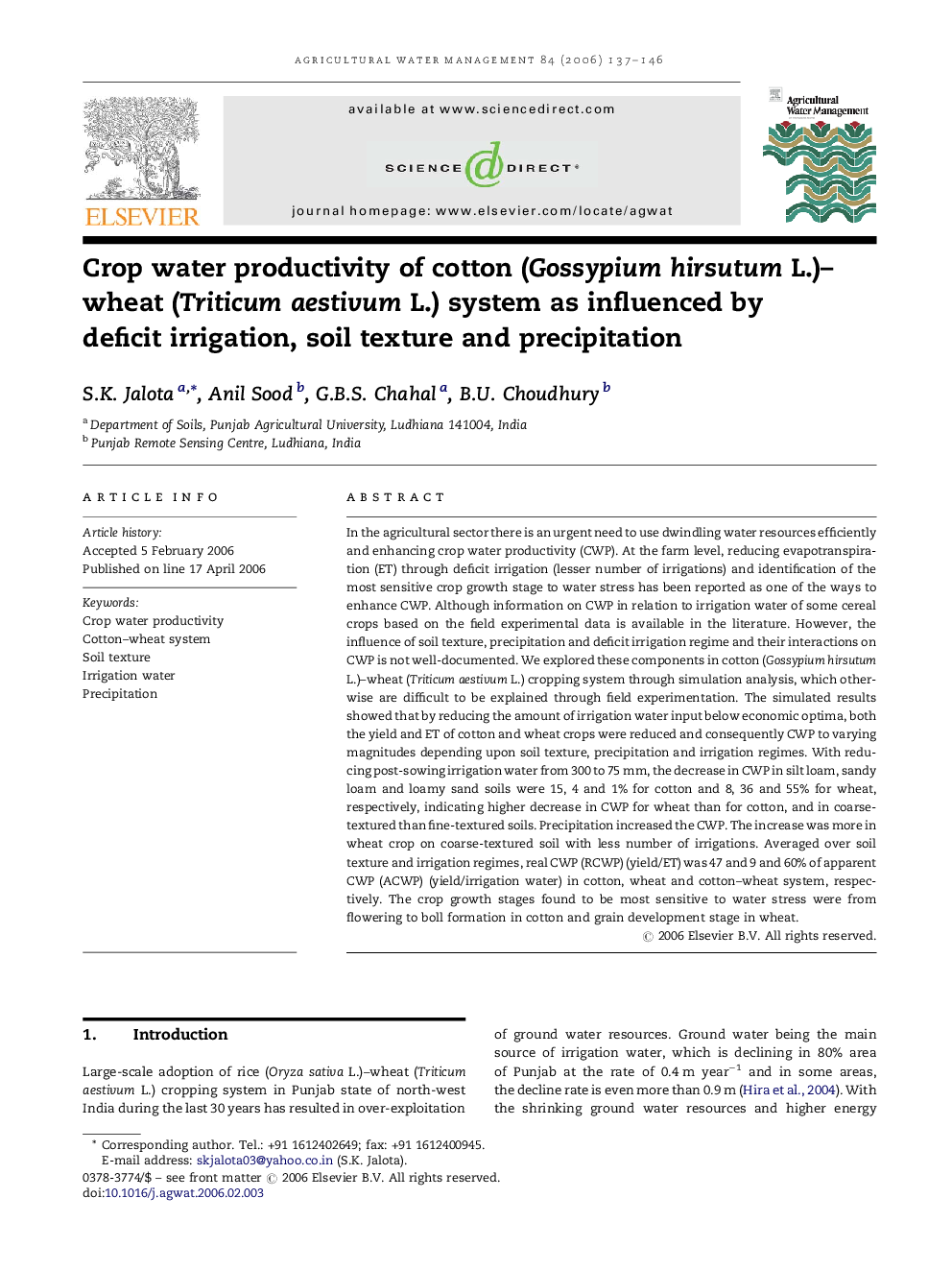| Article ID | Journal | Published Year | Pages | File Type |
|---|---|---|---|---|
| 4480594 | Agricultural Water Management | 2006 | 10 Pages |
In the agricultural sector there is an urgent need to use dwindling water resources efficiently and enhancing crop water productivity (CWP). At the farm level, reducing evapotranspiration (ET) through deficit irrigation (lesser number of irrigations) and identification of the most sensitive crop growth stage to water stress has been reported as one of the ways to enhance CWP. Although information on CWP in relation to irrigation water of some cereal crops based on the field experimental data is available in the literature. However, the influence of soil texture, precipitation and deficit irrigation regime and their interactions on CWP is not well-documented. We explored these components in cotton (Gossypium hirsutum L.)–wheat (Triticum aestivum L.) cropping system through simulation analysis, which otherwise are difficult to be explained through field experimentation. The simulated results showed that by reducing the amount of irrigation water input below economic optima, both the yield and ET of cotton and wheat crops were reduced and consequently CWP to varying magnitudes depending upon soil texture, precipitation and irrigation regimes. With reducing post-sowing irrigation water from 300 to 75 mm, the decrease in CWP in silt loam, sandy loam and loamy sand soils were 15, 4 and 1% for cotton and 8, 36 and 55% for wheat, respectively, indicating higher decrease in CWP for wheat than for cotton, and in coarse-textured than fine-textured soils. Precipitation increased the CWP. The increase was more in wheat crop on coarse-textured soil with less number of irrigations. Averaged over soil texture and irrigation regimes, real CWP (RCWP) (yield/ET) was 47 and 9 and 60% of apparent CWP (ACWP) (yield/irrigation water) in cotton, wheat and cotton–wheat system, respectively. The crop growth stages found to be most sensitive to water stress were from flowering to boll formation in cotton and grain development stage in wheat.
